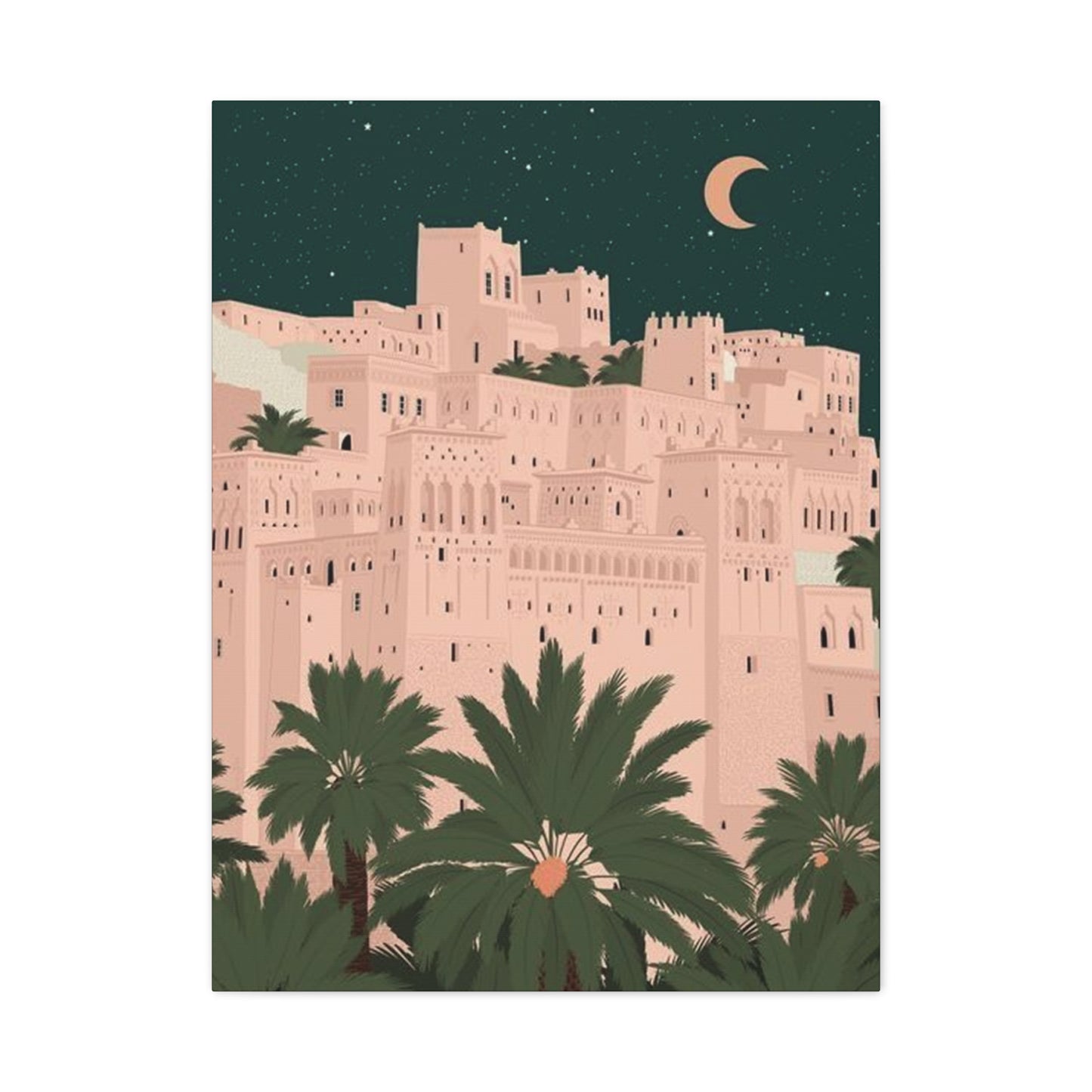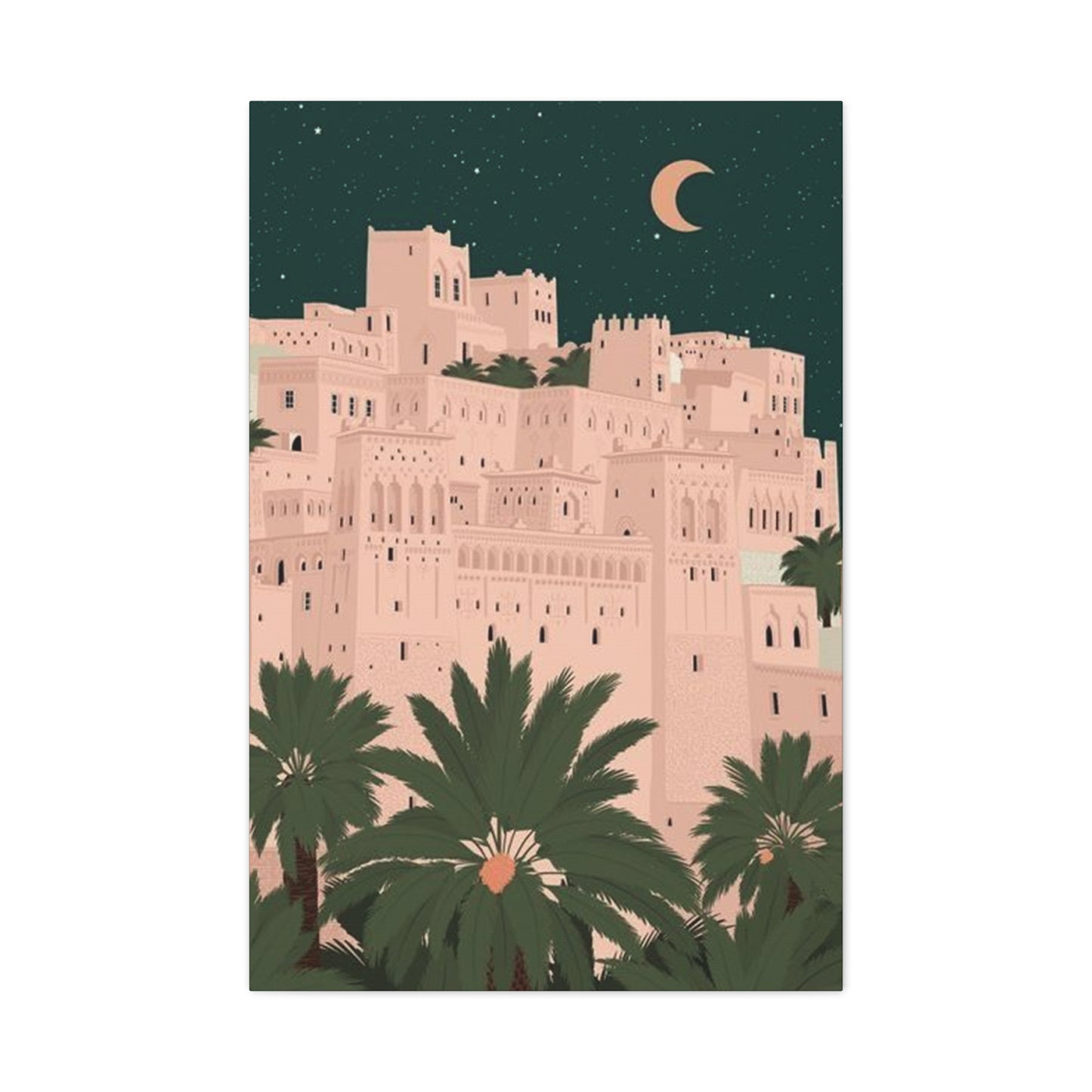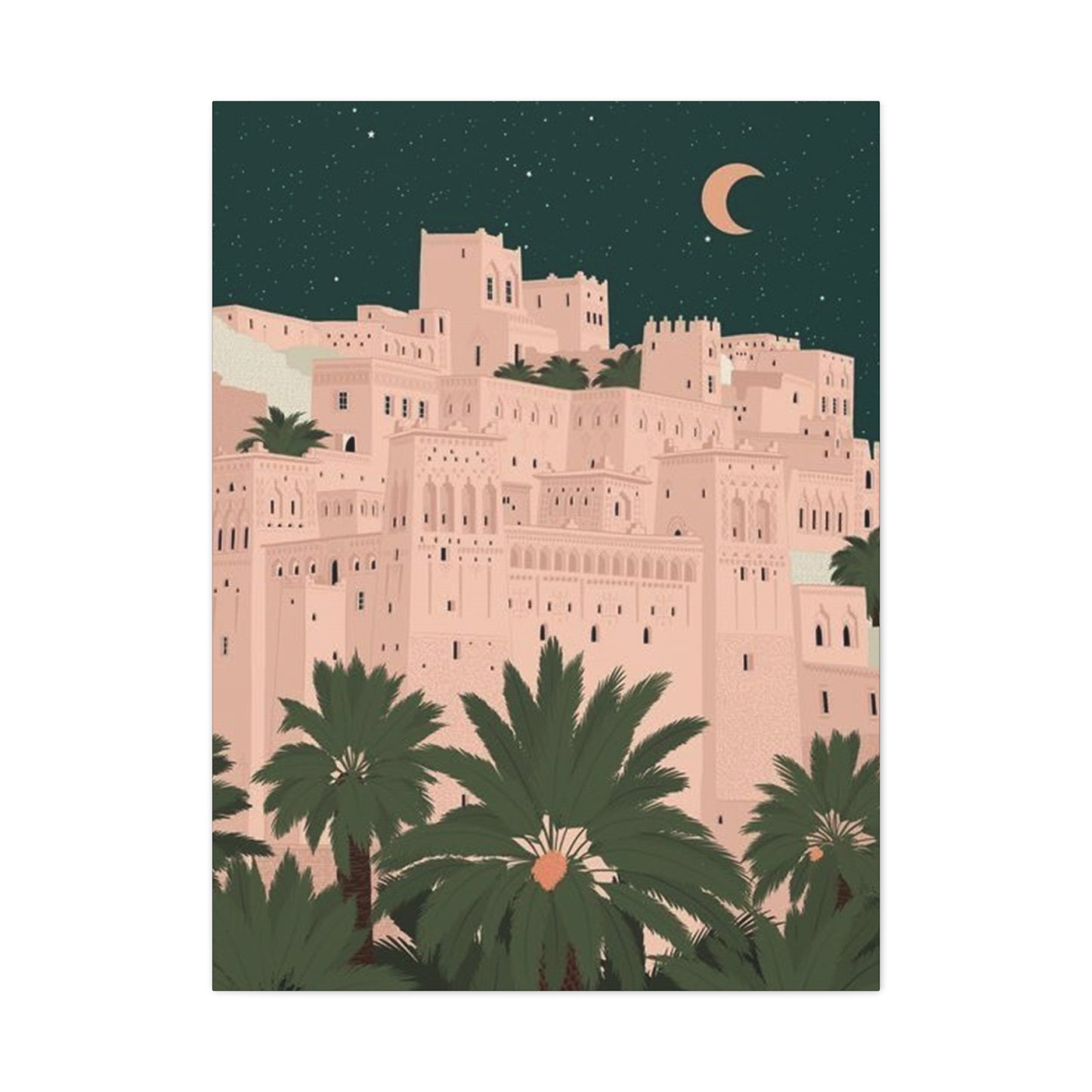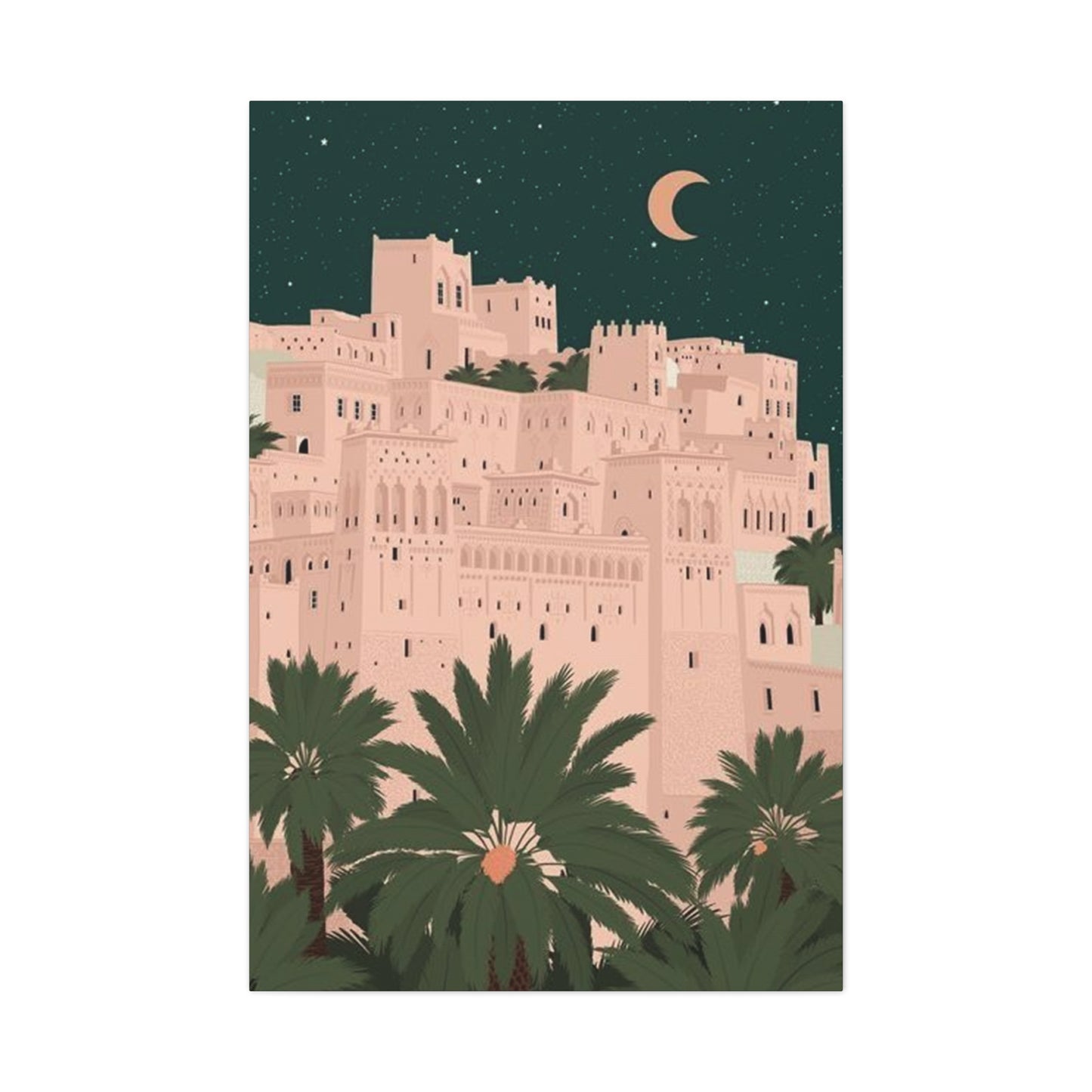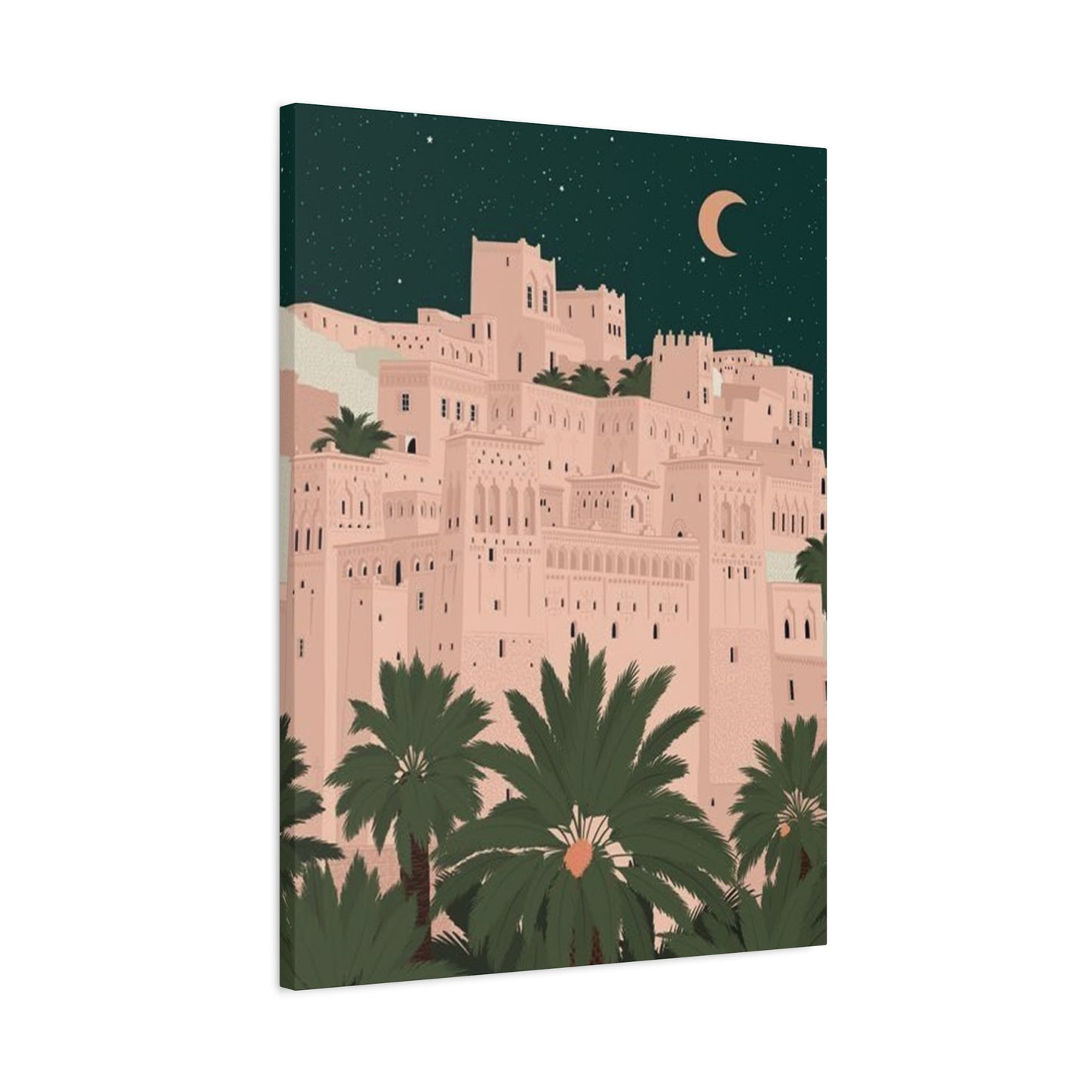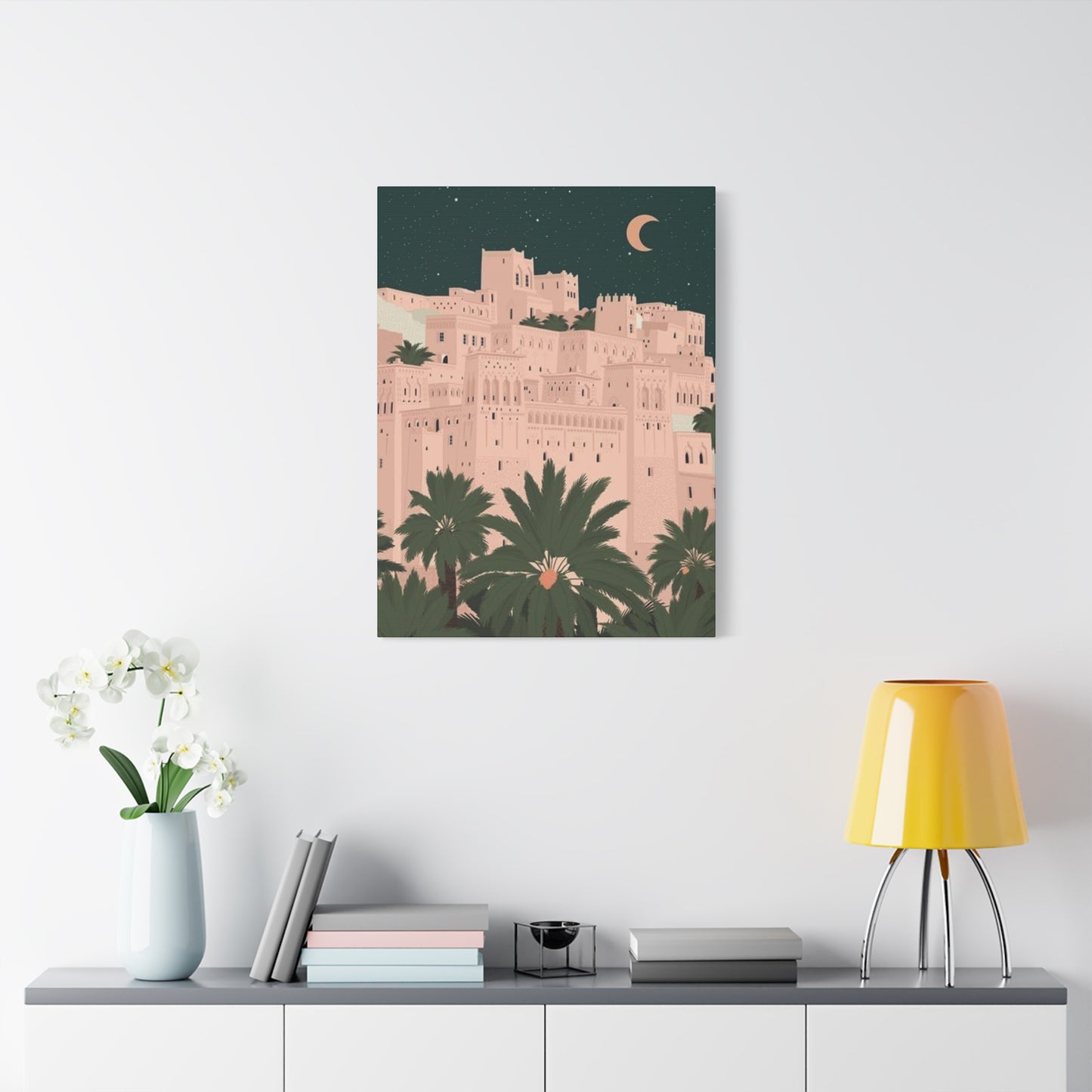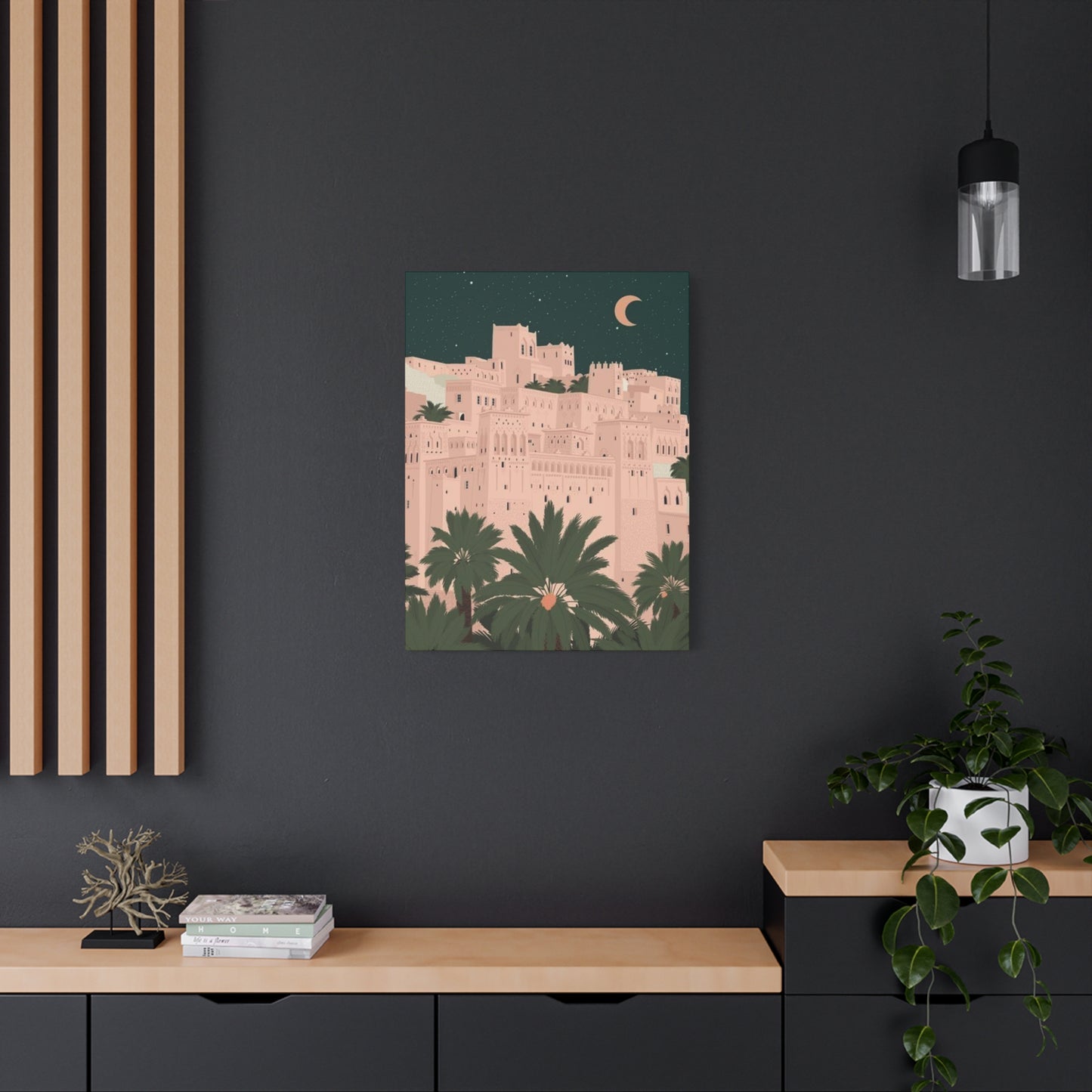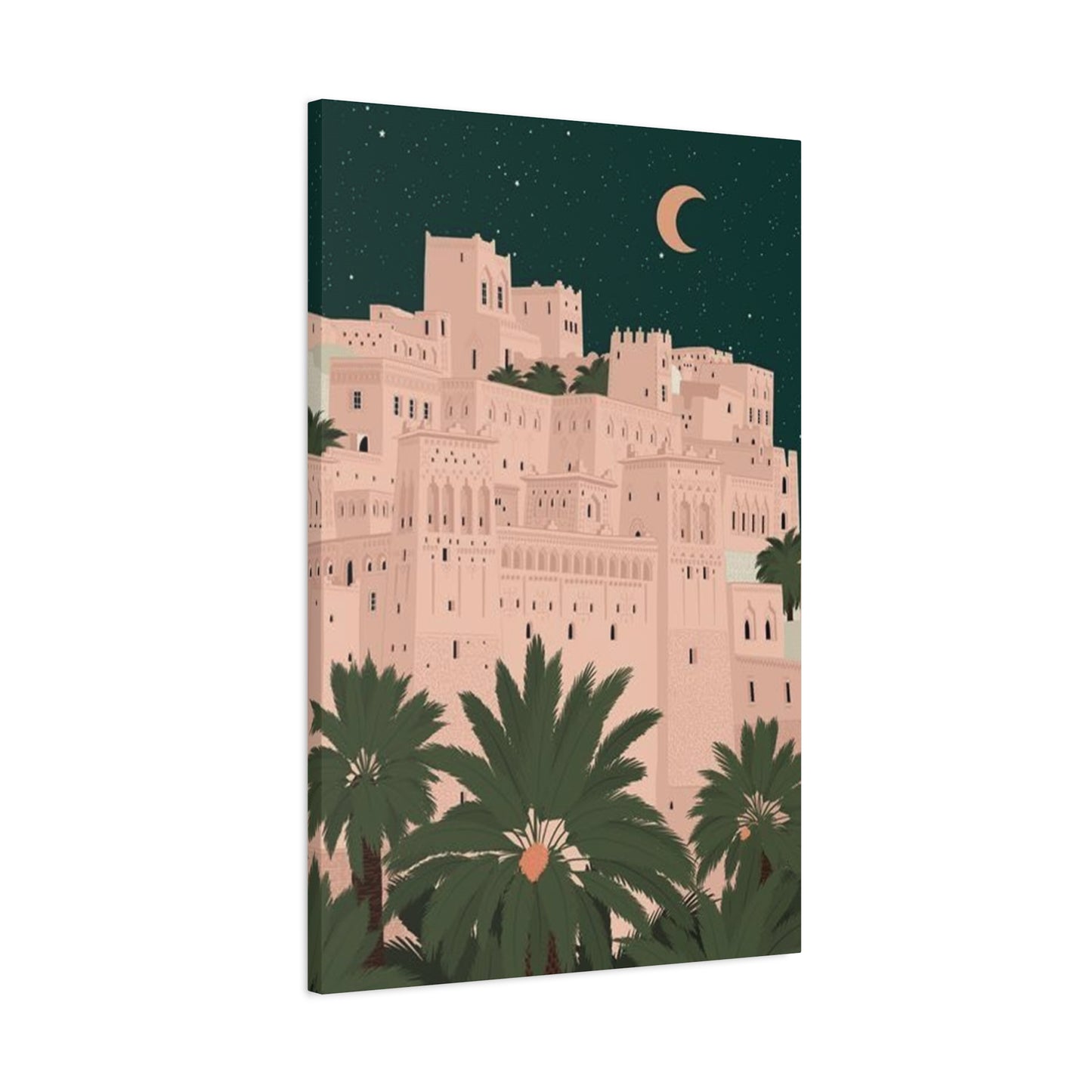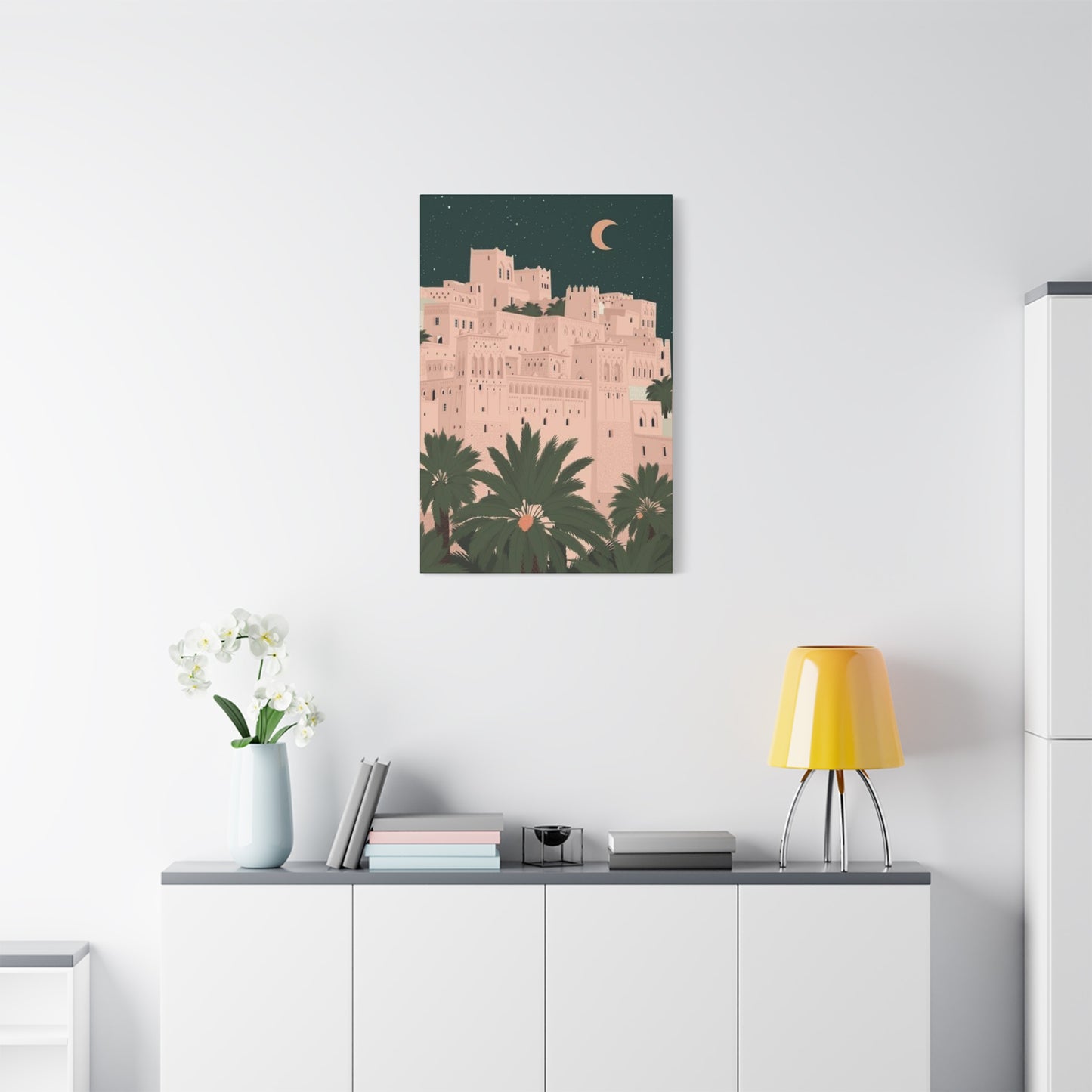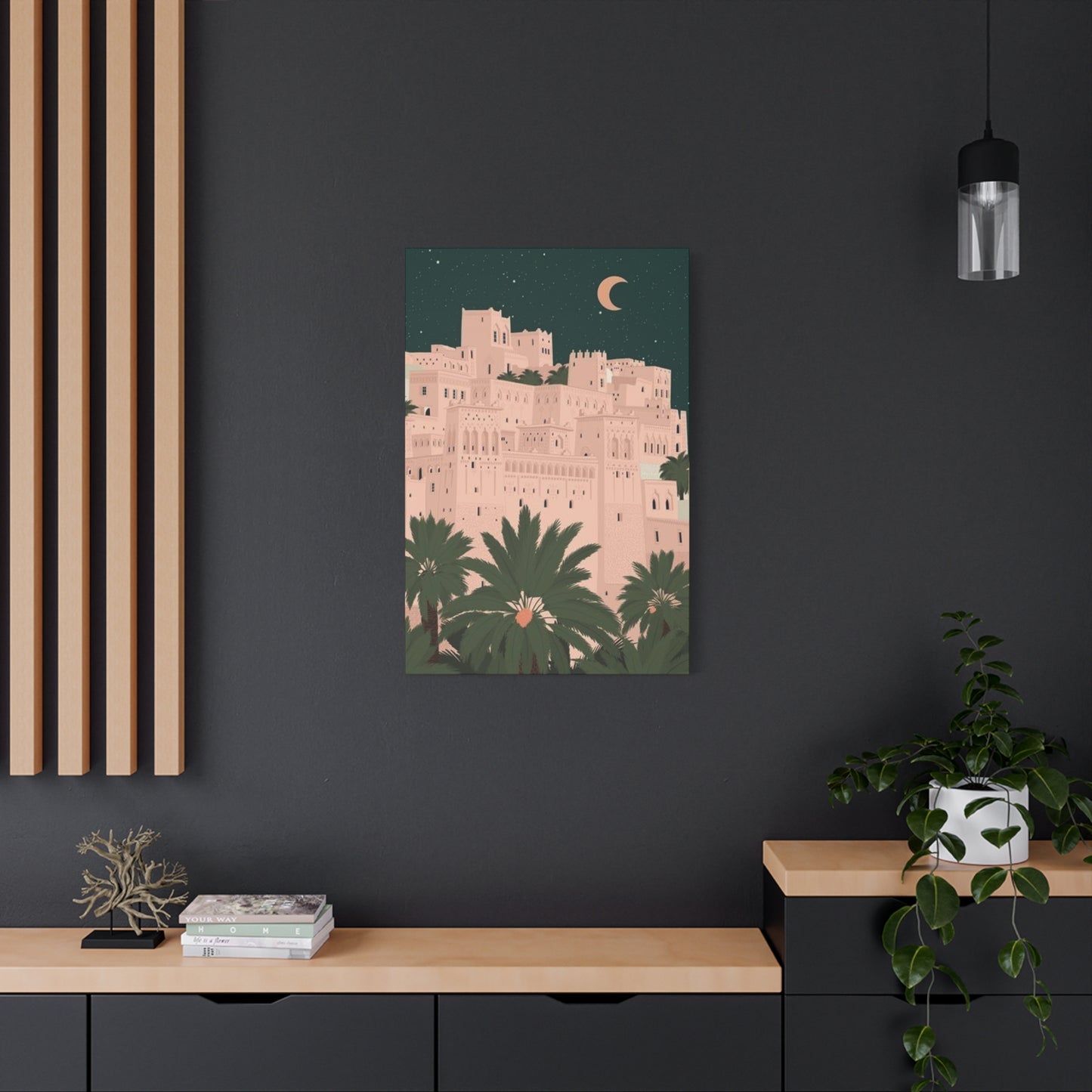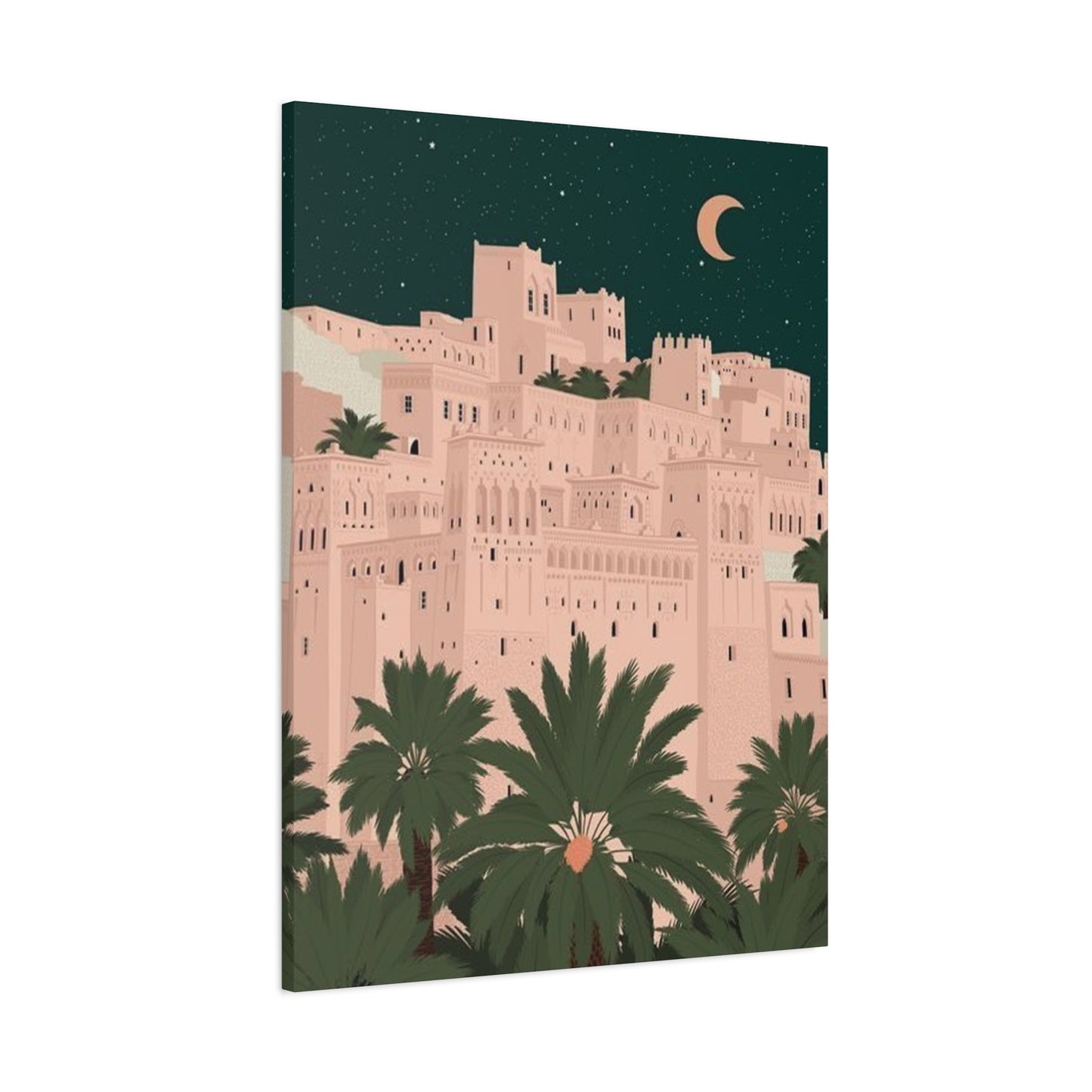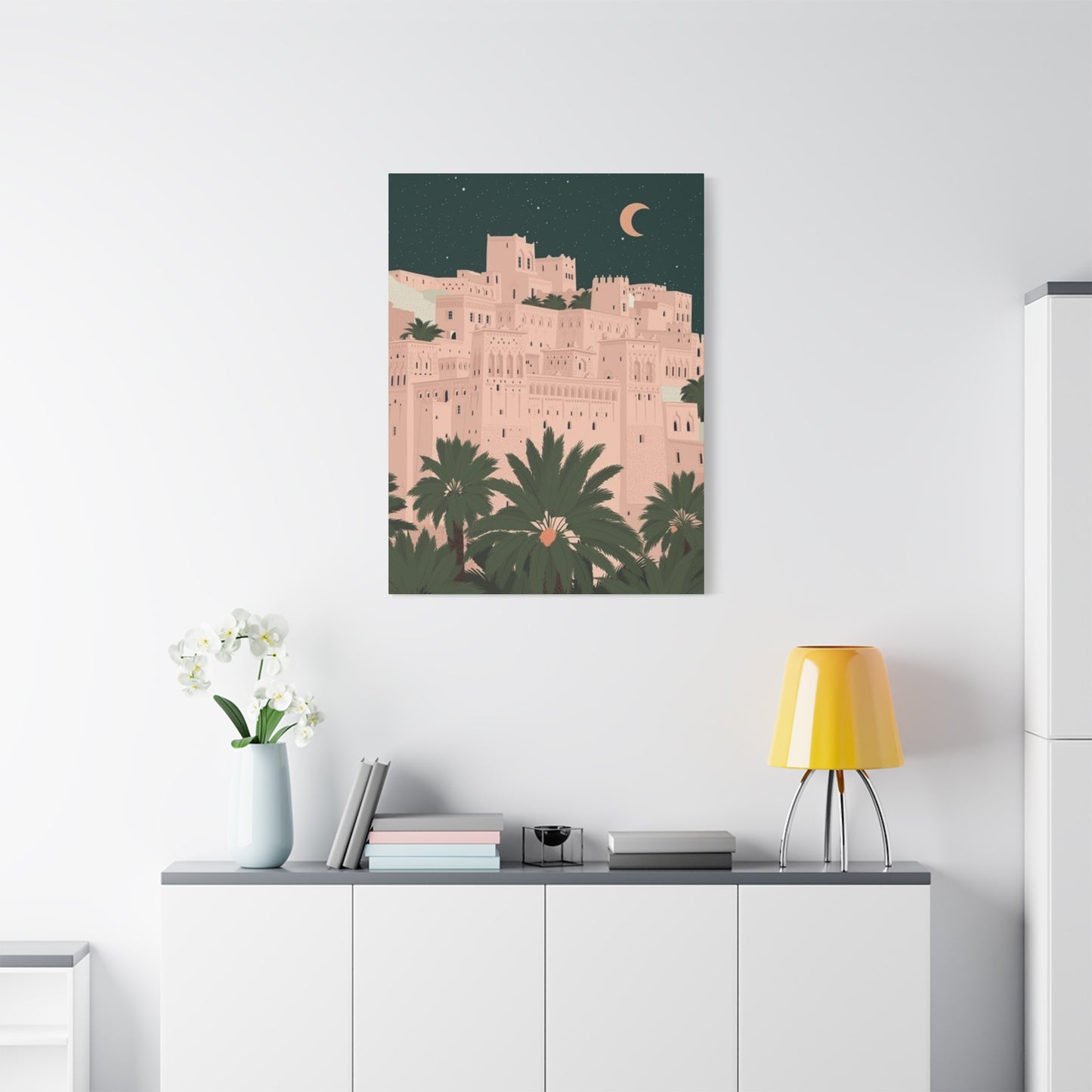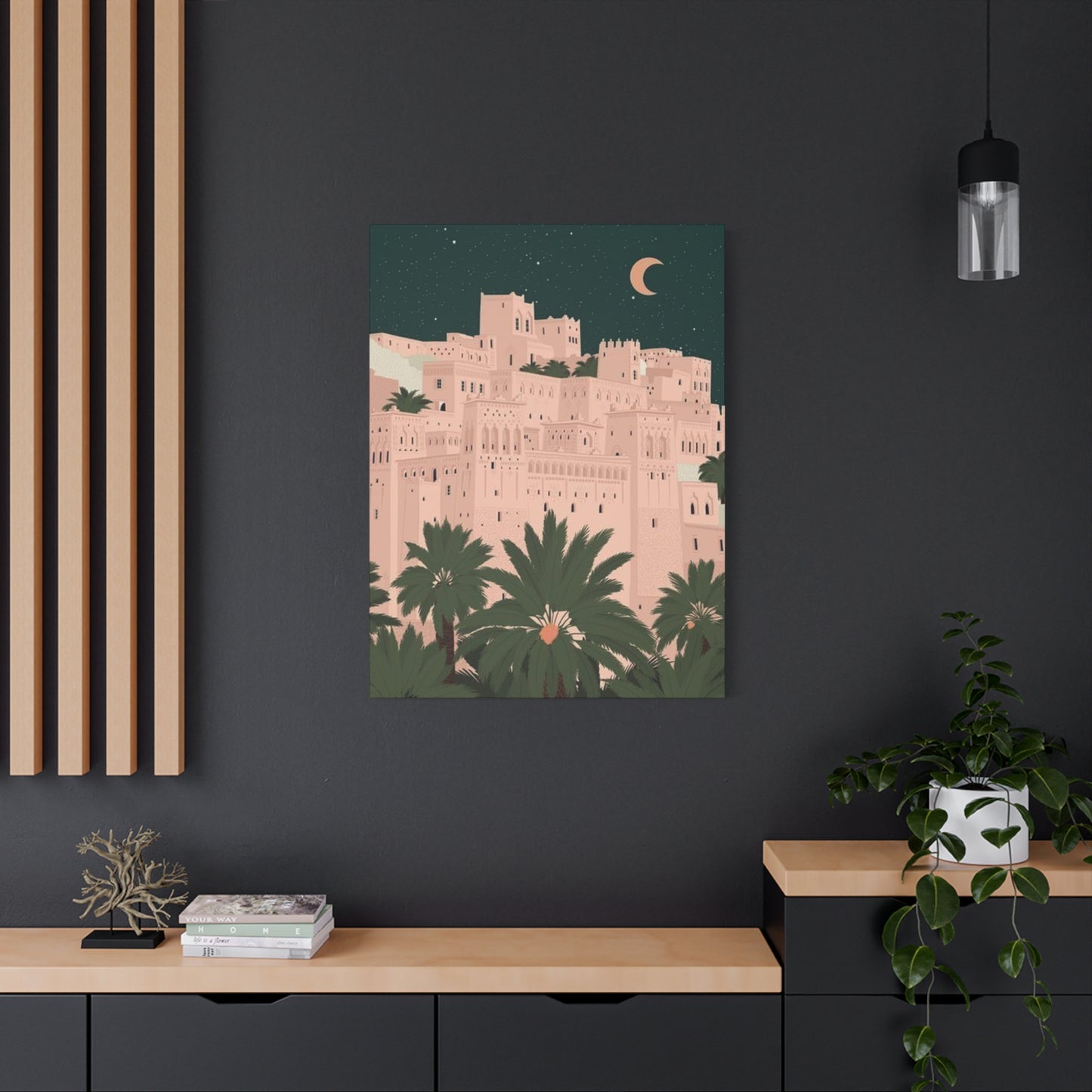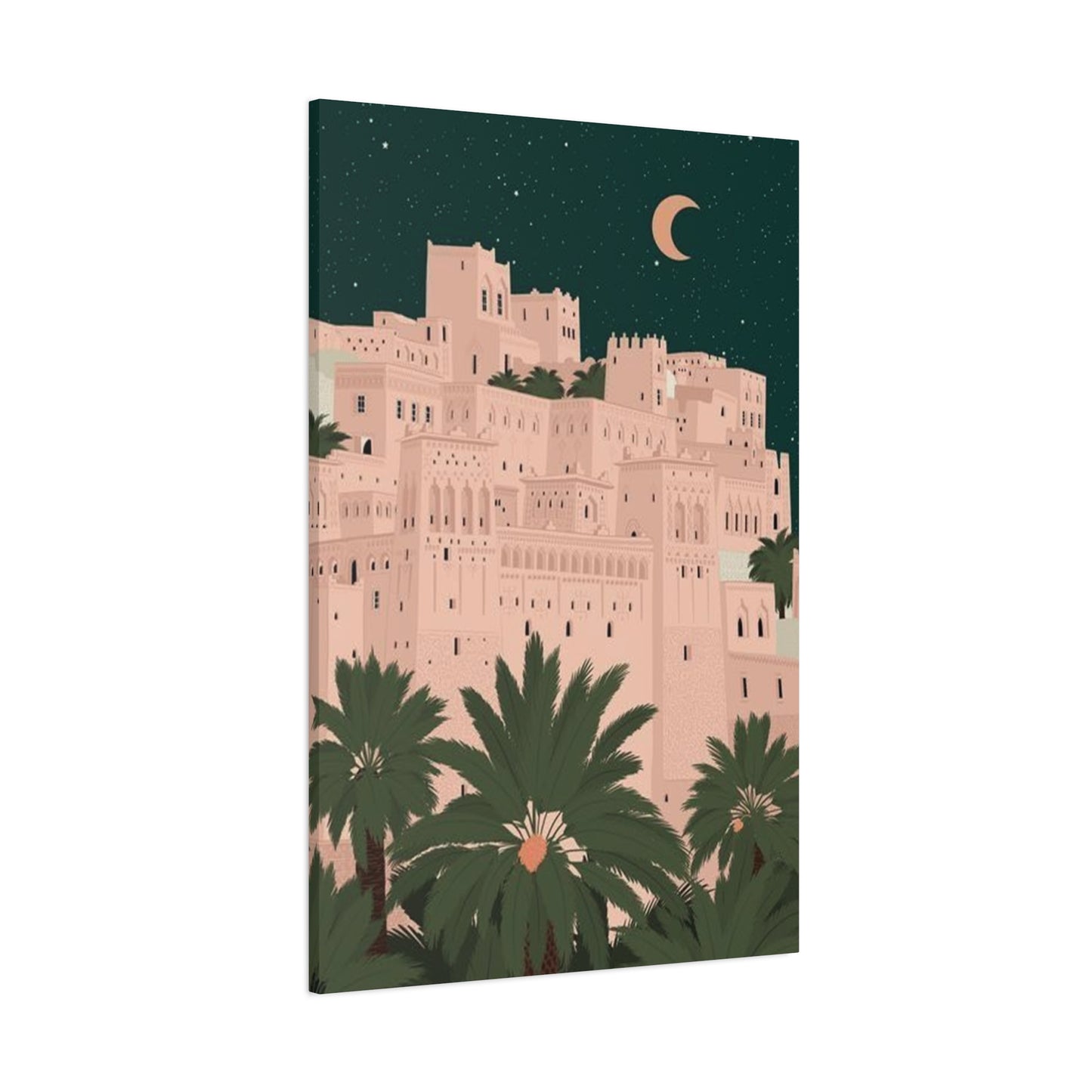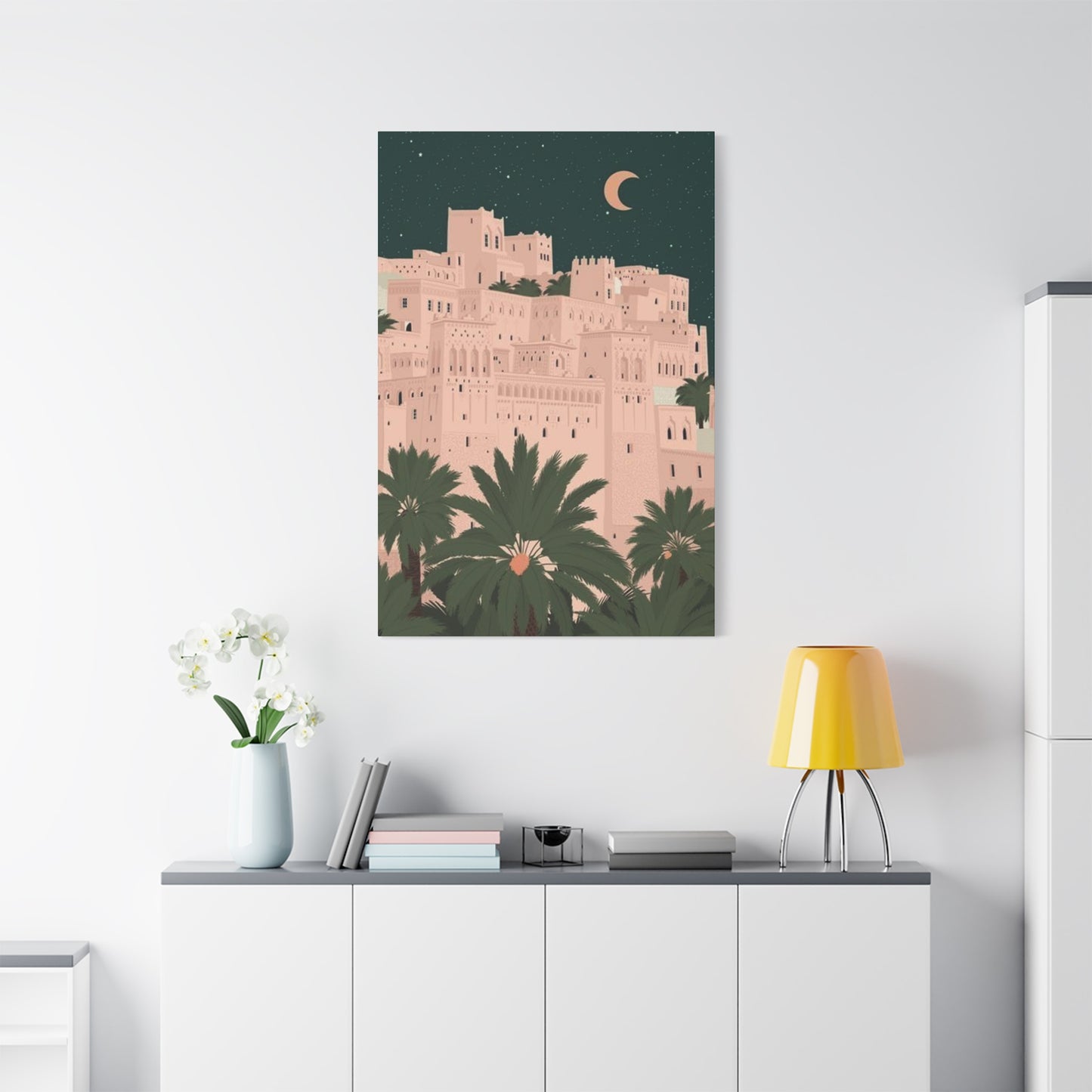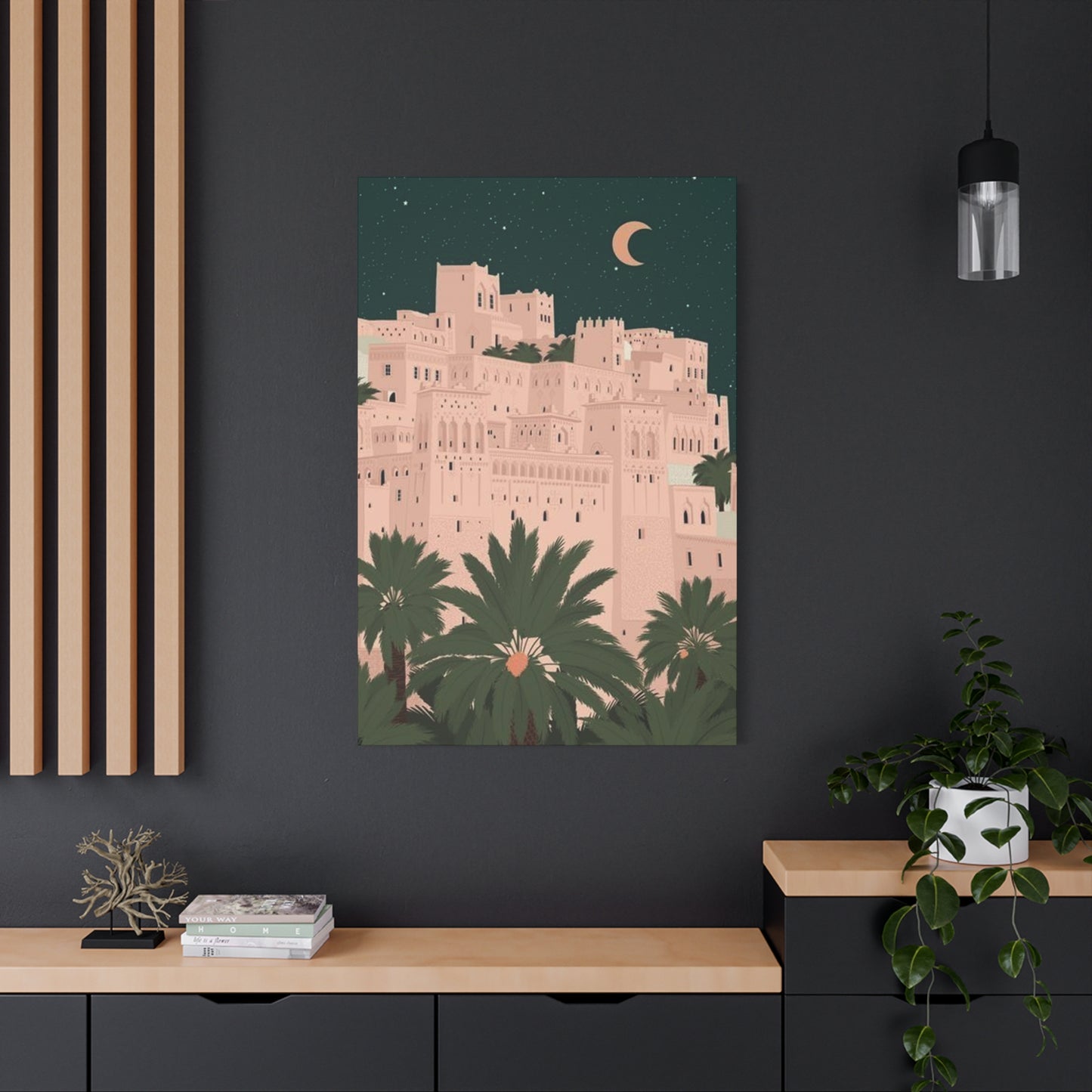Magnificent Spanish Fortress Wall Art: Creating Historic Ambiance in Modern Homes
Spanish fortresses stand as magnificent testaments to centuries of rich history, architectural brilliance, and strategic military planning. These impressive structures, scattered across the Iberian Peninsula, have captured the imagination of artists, historians, and travelers for generations. When translated into wall art, these ancient bastions bring an unparalleled sense of grandeur and cultural depth to contemporary homes. The appeal of Spanish fortress posters lies in their ability to transport viewers to another era, where knights defended castle walls and strategic battles shaped the course of European history.
The visual impact of Spanish fortress wall art extends far beyond mere decoration. These posters serve as windows into a bygone age, showcasing the architectural prowess of medieval builders and the strategic importance of these defensive structures. From the towering walls of Avila to the coastal fortifications of Cadiz, each fortress tells a unique story through its distinctive design elements, weathered stones, and commanding presence against dramatic landscapes.
Modern homeowners increasingly seek authentic artistic pieces that reflect their appreciation for history and culture. Spanish fortress posters fulfill this desire while offering versatility in placement and styling. Whether displayed in a study filled with leather-bound books, a dining room hosting intimate gatherings, or a living room designed for relaxation and conversation, these artistic representations of historical monuments create focal points that inspire discussion and admiration.
The craftsmanship evident in these fortress structures translates beautifully to poster art, where every detail from ancient stonework to strategic positioning can be appreciated and studied. Artists who specialize in architectural illustration bring these monuments to life through careful attention to light, shadow, and perspective, creating pieces that honor the original builders while appealing to contemporary aesthetic sensibilities.
Contemporary printing techniques allow for remarkable reproduction quality, ensuring that the intricate details of fortress architecture are preserved with stunning clarity. High-resolution imaging captures every weathered stone, every architectural flourish, and every defensive feature that makes these structures so fascinating to study and admire.
Brought to Life Through Spanish Fortress Artwork
The rich tapestry of Spanish history unfolds dramatically through fortress wall art, where each structure represents pivotal moments in the development of the nation. These architectural marvels witnessed the rise and fall of kingdoms, the clash of cultures during the Reconquista, and the evolution of military strategy throughout the medieval period. When these fortresses are captured in artistic form, they become powerful storytelling devices that connect modern viewers with the dramatic events that shaped Spanish civilization.
Medieval Spanish fortresses evolved through centuries of conflict and cultural exchange, incorporating influences from Roman engineering, Islamic architectural innovations, and Christian defensive strategies. This unique blend of cultural elements creates visually stunning subjects for wall art, where viewers can appreciate the sophisticated engineering solutions developed by successive generations of builders and military strategists.
The strategic positioning of these fortresses often took advantage of natural topographical features, creating dramatic compositions that artists find irresistible. Perched on rocky outcrops, commanding river valleys, or guarding mountain passes, these structures demonstrate the intimate relationship between human ingenuity and natural landscape. This harmonious integration translates beautifully to poster art, where the fortress and its setting combine to create compelling visual narratives.
Historical events associated with these fortresses add layers of meaning to their artistic representations. Famous sieges, royal ceremonies, and pivotal battles become part of the artwork's appeal, allowing viewers to imagine the human drama that once unfolded within these walls. This historical context enriches the viewing experience, transforming simple architectural images into complex historical documents that reward careful study and contemplation.
The preservation of these monuments through artistic representation serves an important cultural function, ensuring that future generations can appreciate the architectural heritage of Spain even as time and weather continue their inevitable work on the original structures. These posters become cultural ambassadors, sharing Spanish heritage with audiences worldwide and fostering appreciation for medieval architecture and military history.
Fortresses Showcased in Contemporary Poster Collections
Spain boasts numerous fortress complexes that have become favored subjects for contemporary wall art collections. The Alcazar of Segovia stands as perhaps the most recognizable of Spanish fortresses, with its distinctive ship-like silhouette and fairy-tale towers creating an instantly recognizable profile that translates magnificently to poster art. This architectural gem combines military functionality with royal elegance, making it a versatile subject that appeals to both history enthusiasts and lovers of romantic architecture.
The massive walls of Avila represent one of Europe's best-preserved medieval fortification systems, offering poster artists an opportunity to showcase the impressive scale and defensive sophistication of Spanish military architecture. These ancient barriers, with their distinctive towers and gates, create dramatic compositions that emphasize the power and determination of medieval builders. The golden stone of Avila's walls catches light beautifully in artistic representations, creating warm, inviting images that work well in various decor schemes.
Coastal fortresses like those found in Cadiz and Cartagena offer different artistic possibilities, where the interaction between stone fortifications and maritime settings creates dynamic compositions. These seaside bastions protected Spanish ports from naval attacks while serving as symbols of imperial power. Their strategic positions overlooking harbors and coastlines provide dramatic backdrops for artistic interpretation, where the contrast between solid stone and flowing water creates visual tension and interest.
The Alhambra, though more palace than fortress, represents the pinnacle of Spanish defensive architecture with its sophisticated integration of military necessity and aesthetic beauty. This masterpiece of Islamic architecture in Spain offers poster artists rich material for exploration, from its distinctive red walls to its elaborate decorative elements. The complex relationship between fortress and palace creates unique artistic opportunities that showcase the evolution of Spanish architectural traditions.
Mountain fortresses scattered throughout the Pyrenees and other Spanish mountain ranges offer artists opportunities to explore the relationship between human construction and dramatic natural settings. These remote bastions, often built to guard strategic passes or monitor frontier regions, create compelling compositions where architectural elements interact with rugged landscapes to produce visually striking results.
Environments with Spanish Fortress Poster Collections
The integration of Spanish fortress posters into modern home decor requires careful consideration of both aesthetic and practical factors. These historical artworks possess inherent gravitas that can anchor entire room designs while providing sophisticated focal points that reflect the homeowner's appreciation for history and culture. The key to successful integration lies in understanding how these powerful images interact with existing furnishings, color schemes, and architectural elements.
Traditional decor schemes benefit enormously from the addition of Spanish fortress posters, where the historical authenticity of these images complements classic furniture styles and established design principles. Rich wood tones, leather furnishings, and warm color palettes create natural partnerships with fortress imagery, where the weathered stones and ancient architecture feel perfectly at home. These combinations create cohesive environments that feel both sophisticated and welcoming.
Contemporary homes can also successfully incorporate fortress wall art by treating these historical images as striking contrast elements that add depth and character to modern minimalist approaches. The juxtaposition between sleek contemporary furnishings and ancient architectural imagery creates visual tension that prevents modern rooms from feeling sterile or impersonal. This approach requires careful attention to proportion and placement to achieve balance between old and new elements.
Color coordination plays a crucial role in successful integration of fortress posters. The warm earth tones typical of Spanish stonework – golden yellows, rustic browns, and weathered grays – provide excellent foundation colors that can be echoed throughout room designs. These natural colors work well with both warm and cool contemporary color schemes, offering flexibility in design approach while maintaining visual coherence.
Lighting considerations become particularly important when displaying fortress posters, as these architectural subjects benefit from illumination that enhances their dimensional qualities and brings out textural details. Strategic placement relative to natural light sources can create dramatic effects throughout the day, while carefully chosen artificial lighting can ensure consistent impact during evening hours.
Spanish Fortress Posters as Meaningful and Memorable Gifts
The selection of Spanish fortress wall art as gifts reflects thoughtful consideration of the recipient's interests and appreciation for history, culture, and architectural beauty. These posters appeal to a diverse range of enthusiasts, from serious students of military history to casual admirers of medieval architecture. The universal appeal of these subjects makes them excellent choices for gift-giving occasions where the goal is to provide something both beautiful and meaningful.
Travel enthusiasts particularly appreciate fortress posters as reminders of memorable journeys or inspiration for future adventures. For those who have visited Spanish fortresses, these artistic representations serve as lasting mementos that capture the essence of their travel experiences. The emotional connection between personal memories and artistic representation creates especially meaningful gifts that will be treasured for years to come.
Educational value adds another dimension to fortress posters as gifts, particularly for students, teachers, or anyone with interests in history, architecture, or European culture. These images serve as study aids, conversation starters, and sources of inspiration for further learning. The visual impact of well-executed fortress artwork can spark curiosity about historical events, architectural techniques, or Spanish culture in general.
The versatility of fortress posters in various home settings makes them practical gifts that recipients can easily incorporate into their existing decor. Unlike more specific decorative items that might clash with established design schemes, these historical artworks adapt well to different environments while maintaining their distinctive character and appeal.
Professional framing services can transform fortress posters into gallery-quality presentations that reflect the giver's attention to detail and commitment to providing truly special gifts. Custom matting, archival materials, and protective glazing ensure that these gifts will maintain their beauty and value over time, making them investments in lasting appreciation rather than temporary decorative items.
Discovering Spanish Cultural Heritage Through Fortress Wall Art
Spanish fortress wall art serves as a gateway to understanding the complex cultural heritage of the Iberian Peninsula, where centuries of diverse influences have created unique architectural and artistic traditions. These defensive structures embody the multicultural history of Spain, where Roman engineering, Islamic architectural innovation, and Christian military strategy combined to produce distinctive building styles that continue to fascinate contemporary observers.
The educational value of fortress posters extends beyond simple architectural appreciation to encompass broader understanding of Spanish social, political, and military history. Each fortress represents specific historical periods and cultural influences, creating opportunities for viewers to explore the evolution of Spanish society through its defensive architecture. This educational dimension transforms decorative artwork into valuable learning resources that can inspire further study and cultural exploration.
Regional variations in fortress design reflect the diverse geographical and cultural conditions found throughout Spain, from the Islamic influences evident in southern fortifications to the Christian military architecture dominant in northern regions. These variations provide rich material for comparative study and appreciation, where viewers can trace the development of architectural styles across different regions and time periods.
The craftsmanship evident in Spanish fortress construction demonstrates the high level of skill and knowledge possessed by medieval builders, engineers, and military strategists. Artistic representations of these structures allow contemporary viewers to appreciate technical achievements that remain impressive by modern standards. The sophisticated understanding of materials, structural engineering, and defensive strategy evident in these buildings reflects advanced civilizations that produced lasting monuments to human ingenuity.
Cultural exchange and artistic influence become visible through careful study of fortress architecture as represented in wall art. The integration of different cultural traditions in Spanish fortifications tells the story of a society that absorbed and transformed various influences while maintaining its distinctive character. This cultural synthesis creates visually rich subjects for artistic interpretation that reward careful observation and study.
Immortalizing Spanish Fortresses Through Classic Poster Design Approaches
The artistic interpretation of Spanish fortresses in poster form requires careful balance between historical accuracy and aesthetic appeal, where artists must capture the essence of these ancient structures while creating compositions that work effectively as contemporary decorative art. Classical approaches to fortress poster design emphasize the monumental character of these buildings, using dramatic perspectives and carefully composed lighting to convey their impressive scale and enduring presence.
Traditional artistic techniques find new expression in fortress poster design, where established principles of composition, color theory, and perspective are applied to architectural subjects with rich historical significance. The challenge for artists lies in translating three-dimensional fortress structures into compelling two-dimensional compositions that maintain the power and presence of the original buildings while working effectively as wall art in contemporary settings.
Photographic approaches to fortress poster design offer opportunities to capture the authentic character of these structures with precise detail and accurate color representation. High-quality photography can reveal architectural elements that might be lost in more interpretive artistic approaches, providing viewers with documentary-level accuracy while maintaining the aesthetic appeal necessary for successful decorative art.
Artistic interpretation allows for more creative approaches to fortress representation, where artists can emphasize particular aspects of these structures while creating unique visual effects that enhance their decorative potential. Watercolor treatments can emphasize the romantic character of fortress ruins, while more precise technical illustration might focus on architectural details and construction techniques.
Mixed-media approaches combine photographic accuracy with artistic interpretation, creating poster designs that offer both documentary value and aesthetic appeal. These hybrid techniques allow artists to emphasize particular aspects of fortress architecture while maintaining overall accuracy and historical authenticity. The result is artwork that satisfies both educational and decorative requirements while appealing to diverse audiences.
Styling Strategies for Spanish Fortress Poster Integration
The successful integration of Spanish fortress posters into existing home environments requires strategic approaches that consider both aesthetic and practical factors. These powerful historical images possess inherent character that can either enhance or overwhelm room designs, depending on how they are incorporated into overall decorative schemes. Understanding the visual weight and cultural significance of fortress imagery is essential for creating balanced, harmonious environments.
Scale relationships become crucial when positioning fortress posters within room compositions, where the monumental character of these subjects must be balanced against furniture, architectural features, and other decorative elements. Large fortress images work best as focal points in spacious areas where their impressive scale can be properly appreciated, while smaller prints might serve better as accent pieces in more intimate settings.
Grouping strategies for multiple fortress posters require careful attention to visual relationships between different subjects, time periods, and artistic approaches. Thematic groupings based on geographical regions, architectural styles, or historical periods can create cohesive presentations that tell comprehensive stories about Spanish fortress development. Alternately, contrasting approaches might juxtapose different fortress types or artistic interpretations to create dynamic visual dialogues.
Matting and framing choices significantly impact the final appearance and integration of fortress posters within room designs. Traditional framing approaches using wood tones and classic profiles can emphasize the historical character of these subjects, while contemporary framing solutions might create interesting contrasts between ancient subjects and modern presentation methods. The selection of matting colors and textures provides opportunities to tie fortress artwork into existing room color schemes while maintaining appropriate emphasis on the artwork itself.
Placement considerations include not only wall positioning but also relationships to lighting sources, viewing angles, and traffic patterns within rooms. Fortress posters benefit from positioning that allows for comfortable viewing from multiple locations while taking advantage of both natural and artificial lighting to reveal architectural details and enhance dramatic impact.
Contemporary Versus Traditional Approaches to Spanish Fortress Wall Art
The evolution of artistic approaches to Spanish fortress representation reflects broader changes in aesthetic preferences, printing technologies, and cultural perspectives on historical architecture. Traditional approaches to fortress wall art emphasized romantic interpretations that highlighted the picturesque qualities of these ancient structures, often incorporating atmospheric effects and idealized settings that appealed to nineteenth and early twentieth-century sensibilities.
Contemporary approaches tend toward greater historical accuracy and documentary precision, taking advantage of advanced photography and printing technologies to capture fortress architecture with unprecedented detail and color fidelity. Modern artists and photographers can record architectural elements that earlier generations might have simplified or romanticized, providing viewers with more comprehensive and accurate representations of these historical monuments.
Stylistic preferences have shifted toward cleaner, more direct presentations that allow the inherent power and beauty of fortress architecture to speak for itself without excessive romantic embellishment. This approach reflects contemporary appreciation for authentic historical material and increased sophistication in architectural understanding among general audiences.
Color treatment represents another area where contemporary and traditional approaches differ significantly. Earlier fortress artwork often emphasized warm, golden tones that created welcoming, romanticized impressions of these defensive structures. Contemporary approaches might include cooler, more accurate color palettes that reflect actual stone colors and atmospheric conditions while maintaining aesthetic appeal.
Technical quality has improved dramatically with advances in digital photography, color reproduction, and printing technologies. Contemporary fortress posters can achieve levels of detail, color accuracy, and overall quality that surpass earlier artistic interpretations while maintaining reasonable production costs that make high-quality fortress artwork accessible to broader audiences.
Spanish Fortress Wall Art for Adventure and Travel Enthusiasts
Travel-oriented approaches to Spanish fortress wall art recognize these historical monuments as destinations that inspire adventure and cultural exploration. For many travelers, Spanish fortresses represent compelling reasons to visit particular regions, while for others, they serve as memorable highlights of past journeys. This travel connection adds emotional resonance to fortress artwork that goes beyond simple aesthetic appreciation.
Geographic diversity among Spanish fortresses provides travel enthusiasts with rich collecting opportunities, where fortress posters can represent different regions, landscapes, and historical periods. A comprehensive collection might include coastal fortifications from Andalusia, mountain strongholds from the Pyrenees, and urban fortresses from Castile, creating a visual tour of Spanish geography and military history.
Planning tools represent another application for fortress wall art among travel enthusiasts, where poster collections can serve as inspiration for future journeys and research aids for trip planning. High-quality fortress images allow armchair travelers to study architectural details and geographical settings before visiting actual locations, enhancing the eventual travel experience through advance familiarization.
Personal memory preservation motivates many collectors of fortress wall art, where these images serve as lasting reminders of meaningful travel experiences. The emotional connection between personal memories and artistic representation creates particularly strong attachments to fortress posters that document specific places and experiences.
Educational preparation benefits from fortress poster collections that introduce travelers to historical and architectural contexts before visiting actual sites. Understanding fortress development, architectural styles, and historical significance enhances on-site experiences and provides frameworks for deeper appreciation of these remarkable historical monuments.
Creative Artistic Interpretations of Spanish Fortress Architecture
Artistic creativity finds rich expression in interpretive approaches to Spanish fortress representation, where artists move beyond documentary accuracy to explore emotional, atmospheric, and aesthetic possibilities suggested by these ancient structures. Creative interpretations can emphasize particular aspects of fortress architecture while developing unique visual languages that enhance both artistic impact and decorative potential.
Atmospheric effects offer artists opportunities to create mood and emotional resonance through manipulated lighting, weather conditions, and seasonal settings. Fortress silhouettes against dramatic skies, morning mist around ancient walls, or golden hour illumination on weathered stones can transform straightforward architectural subjects into evocative artistic statements that appeal to emotional as well as intellectual responses.
Color manipulation allows artists to explore creative possibilities beyond literal representation, where fortress architecture becomes the foundation for explorations in color theory, emotional expression, and aesthetic experimentation. Monochromatic treatments might emphasize form and texture, while enhanced color approaches could create striking visual effects that maintain recognizable fortress elements while achieving unique artistic character.
Stylistic approaches ranging from photorealistic precision to abstract interpretation provide diverse artistic possibilities for fortress representation. Impressionistic treatments might capture the essential character of fortress architecture while creating distinctive artistic styles, while more abstract approaches could use fortress elements as starting points for creative compositions that maintain architectural references while achieving independent artistic merit.
Mixed-media techniques combine different artistic approaches and materials to create unique fortress representations that offer rich textural and visual complexity. Combinations of photography with painting, digital manipulation with traditional artistic techniques, or collage approaches incorporating historical maps and documents can create fortress artwork that functions on multiple levels while maintaining strong decorative appeal.
Sourcing Authentic Spanish Fortress Wall Art Collections
The acquisition of high-quality Spanish fortress wall art requires careful attention to authenticity, artistic merit, and production quality to ensure lasting satisfaction with these significant decorative investments. Reputable sources provide not only superior artistic content but also reliable information about fortress subjects, historical contexts, and artistic approaches that enhance the educational and cultural value of these artworks.
Specialized art publishers focusing on architectural and historical subjects often produce the highest quality fortress poster collections, where expert knowledge combines with advanced production techniques to create superior artistic products. These publishers typically work with skilled photographers and artists who understand both fortress architecture and effective artistic presentation, resulting in collections that satisfy both aesthetic and educational requirements.
Museum collections provide excellent sources for fortress wall art, where institutional expertise ensures historical accuracy and artistic quality while supporting cultural institutions dedicated to preserving and sharing architectural heritage. Museum publications often include detailed information about fortress subjects, historical contexts, and architectural significance that adds value to artwork acquisitions.
Local Spanish sources, including regional tourism boards and cultural organizations, sometimes produce fortress artwork that emphasizes regional architectural traditions and specific historical contexts. These sources can provide unique fortress representations that might not be available through international publishers while supporting local cultural initiatives and regional artistic traditions.
Online galleries specializing in architectural artwork offer convenient access to diverse fortress poster collections from multiple publishers and artists. These platforms often provide detailed information about fortress subjects, artistic approaches, and production qualities while offering comparison shopping opportunities that help buyers make informed decisions about fortress artwork acquisitions.
Harmonizing Spanish Fortress Posters with Mediterranean Decorative Themes
Mediterranean decorative approaches provide natural partnerships with Spanish fortress wall art, where shared cultural heritage and compatible aesthetic elements create harmonious environments that feel authentic and well-integrated. The warm color palettes, natural materials, and historical references common in Mediterranean design schemes complement fortress imagery while creating cohesive decorative themes that celebrate regional cultural traditions.
Color harmony between fortress artwork and Mediterranean decorative elements creates unified visual schemes that feel natural and unforced. The earth tones typical of Spanish fortress architecture – warm ochres, weathered grays, and golden stones – blend seamlessly with Mediterranean color palettes that emphasize natural pigments and warm, welcoming hues. These color relationships create foundations for comprehensive room designs that feel both sophisticated and comfortable.
Material coordination allows fortress posters to integrate effectively with Mediterranean furniture and decorative accessories, where natural materials like wood, stone, and iron create visual connections with fortress architectural elements. Terra cotta accessories, wrought iron fixtures, and weathered wood furniture provide contextual support for fortress imagery while maintaining consistent decorative themes throughout room designs.
Textural relationships between fortress artwork and Mediterranean decorative elements enhance overall environmental cohesion, where rough stone textures in fortress images complement similar textural qualities in Mediterranean ceramics, textiles, and architectural features. These textural connections create rich, layered environments that reward close observation while maintaining overall harmony and balance.
Historical continuity links Spanish fortress architecture with broader Mediterranean cultural traditions, where fortress imagery represents specific manifestations of architectural and military developments that influenced the entire Mediterranean region. This historical context adds depth and authenticity to decorative schemes that combine fortress artwork with Mediterranean design elements.
Spanish Fortress Poster Collections for Historical Enthusiasts
History enthusiasts find particular satisfaction in Spanish fortress wall art that combines aesthetic appeal with educational value, where artistic beauty serves as a vehicle for historical exploration and cultural understanding. These specialized collections often emphasize historical accuracy, architectural detail, and contextual information that enhance appreciation for fortress subjects while providing ongoing opportunities for study and discovery.
Chronological approaches to fortress poster collecting allow history enthusiasts to trace the development of Spanish military architecture across different time periods, from Roman influences through medieval innovations to Renaissance modifications. This developmental perspective provides educational frameworks that enhance understanding of how fortress design evolved in response to changing military technologies, strategic requirements, and cultural influences.
Regional specialization offers opportunities for focused collecting that explores particular geographical areas or cultural influences in detail. Collections emphasizing Moorish fortress architecture in southern Spain, Christian fortifications in central regions, or coastal defenses along Spanish shores allow for deep exploration of specific historical and architectural themes while maintaining manageable scope for serious study.
Architectural analysis becomes possible through high-quality fortress posters that capture sufficient detail to support examination of construction techniques, defensive strategies, and architectural innovations. History enthusiasts can study fortress artwork to understand how medieval builders addressed specific challenges and incorporated various cultural influences into their designs.
Historical context enhancement through fortress artwork provides visual references that support broader historical study and cultural exploration. These images serve as starting points for research into specific historical events, cultural developments, and architectural traditions while maintaining decorative value that makes serious study environments more visually appealing and personally meaningful.
Distinctive Spanish Fortress Posters Worth Collecting
Collector interest in Spanish fortress wall art focuses on unique artistic interpretations, exceptional subject matter, and superior production quality that distinguish particular pieces from mass-produced decorative prints. Serious collectors develop appreciation for artistic merit, historical significance, and rarity factors that make certain fortress posters valuable additions to comprehensive collections focused on Spanish architecture and military history.
Limited edition fortress posters often represent the highest quality artistic interpretation combined with exclusive availability that appeals to serious collectors. These special releases typically feature superior printing techniques, archival materials, and careful attention to color accuracy that ensures lasting quality while providing collectors with unique pieces that maintain their distinctiveness and value over time.
Artist signatures and provenance add significant value to fortress poster collections, where documented artistic attribution and publication history enhance both cultural and investment value. Collectors particularly prize works by recognized architectural artists or photographers who have established reputations for excellence in fortress documentation and artistic interpretation.
Subject rarity influences collector interest in fortress posters, where images of lesser-known or difficult-to-access fortress sites command premium attention from serious enthusiasts. These unique subjects offer collectors opportunities to acquire distinctive pieces that might not be available through conventional commercial channels while supporting documentation of Spain's comprehensive fortress heritage.
Condition factors significantly impact collector value for fortress posters, where proper storage, handling, and display practices preserve artistic and investment value over time. Collectors typically invest in archival storage materials, UV-protective glazing, and climate-controlled display environments that ensure their fortress artwork maintains optimal condition for future appreciation and potential resale.
Advanced Framing and Display Techniques for Spanish Fortress Art
Professional presentation of Spanish fortress wall art requires sophisticated understanding of framing principles, material selection, and display techniques that enhance artistic impact while protecting valuable artwork from environmental damage. These advanced approaches transform simple poster prints into museum-quality presentations that command respect and admiration while ensuring longevity and continued beauty.
Archival matting materials prevent chemical damage to fortress posters while providing aesthetic enhancement that emphasizes artistic content and maintains appropriate visual relationships between artwork and surrounding frames. Acid-free mats, pH-neutral adhesives, and museum-quality mounting techniques ensure that fortress artwork remains stable and attractive for decades while avoiding common preservation problems that affect improperly mounted prints.
Frame selection significantly impacts the final presentation of fortress artwork, where molding profiles, finish colors, and construction materials must complement both artistic content and room decor while providing adequate protection for valuable prints. Traditional wood frames often work well with fortress subjects, where warm wood tones echo the natural materials used in fortress construction while providing classic aesthetic appeal that transcends changing decorative fashions.
Glazing options range from standard glass to specialized UV-filtering materials that provide protection from light damage while maintaining optimal viewing clarity and color accuracy. Museum-quality glazing eliminates reflections that interfere with comfortable viewing while blocking harmful ultraviolet radiation that can cause fading and deterioration in fortress poster prints over time.
Lighting design becomes particularly important for fortress artwork, where strategic illumination can enhance architectural details and create dramatic effects that emphasize the monumental character of fortress subjects. Track lighting systems, picture lights, and accent illumination can transform fortress posters into focal points that command attention while creating comfortable viewing conditions throughout different times of day.
Display Approaches for Fortress Collections
Dynamic display strategies for Spanish fortress poster collections allow homeowners to maintain fresh, interesting presentations while accommodating changing seasonal preferences and special occasions. These flexible approaches prevent fortress collections from becoming static decorative elements while providing opportunities to emphasize different aspects of fortress architecture and cultural significance throughout the year.
Seasonal rotation strategies take advantage of different lighting conditions and atmospheric preferences that change throughout the year, where particular fortress images might work better during specific seasons. Coastal fortress scenes might be emphasized during summer months, while mountain strongholds could receive featured placement during winter seasons when their defensive character feels more relevant and appealing.
Holiday coordination allows fortress poster collections to support special seasonal decorating themes while maintaining their distinctive character and cultural significance. Spanish fortress artwork can provide sophisticated backdrops for holiday entertaining while educating guests about architectural heritage and military history in ways that enhance rather than compete with seasonal decorative elements.
Thematic groupings based on architectural styles, geographical regions, or historical periods allow collectors to create focused displays that tell specific stories about Spanish fortress development. These curated presentations provide educational value while creating visually coherent arrangements that reward careful study and contemplation.
Guest accommodation considerations might influence fortress poster placement and selection, where particular images are chosen to create welcoming, culturally rich environments for visitors. Fortress artwork can serve as conversation starters that introduce guests to Spanish cultural heritage while providing sophisticated decorative elements that reflect the homeowner's interests and knowledge.
Spanish Fortress Wall Art Collections
Serious collectors of Spanish fortress wall art must consider both aesthetic satisfaction and potential investment value when building comprehensive collections that might appreciate in cultural and monetary worth over time. These considerations require understanding of art market dynamics, production quality factors, and cultural significance indicators that influence long-term value retention and potential appreciation.
Artist recognition plays crucial roles in fortress artwork investment potential, where established reputations for architectural photography or illustration can significantly impact long-term value prospects. Collectors should research artist backgrounds, exhibition histories, and market performance when evaluating fortress poster acquisitions for investment purposes while maintaining focus on personal satisfaction and aesthetic appeal.
Production quality directly impacts both immediate satisfaction and long-term value retention for fortress poster collections. Superior printing techniques, archival materials, and careful color management ensure that fortress artwork maintains its beauty and clarity over time while avoiding common degradation problems that affect lower-quality productions.
Subject significance influences collector interest and potential value appreciation, where fortress images documenting important historical sites or featuring exceptional architectural examples command premium attention from serious enthusiasts. Understanding fortress historical importance and architectural significance helps collectors make informed decisions about acquisition priorities and investment potential.
Market trends in architectural artwork and historical subjects provide context for fortress poster collecting decisions, where broader cultural interest in Spanish heritage, travel destinations, and architectural appreciation can influence demand and value development over time. Collectors who understand these market dynamics can make more strategic acquisition decisions while building collections that provide both personal satisfaction and investment potential.
Spanish Fortress Wall Art
Educational institutions and individual learners find significant value in Spanish fortress wall art that combines visual appeal with authentic historical content, where artistic presentations support teaching objectives while creating stimulating learning environments. These educational applications extend beyond simple decoration to encompass active learning tools that enhance understanding of history, architecture, and cultural development.
Classroom applications for fortress posters include visual aids for history lessons, architectural studies, and cultural education programs where authentic fortress images provide concrete references for abstract historical concepts. Students can examine fortress construction techniques, defensive strategies, and cultural influences through careful study of high-quality architectural artwork that makes distant historical periods more accessible and engaging.
Museum educational programs utilize fortress artwork to create immersive learning environments where visitors can appreciate Spanish architectural heritage while participating in guided educational activities. These applications require superior image quality and accurate historical context that supports professional educational objectives while maintaining visual appeal that keeps learners engaged and interested.
Research applications for fortress artwork include comparative studies, architectural analysis, and historical documentation where detailed fortress images serve as primary source materials for scholarly investigation. Academic researchers use fortress posters as visual references for studying construction techniques, defensive innovations, and cultural influences that shaped Spanish military architecture throughout different historical periods.
Personal learning projects benefit from fortress poster collections that provide visual frameworks for independent study of Spanish history, architecture, and cultural development. Individual learners can use fortress artwork as starting points for broader cultural exploration while creating personally meaningful educational environments that support ongoing learning and discovery.
Cultural Tourism Promotion Through Spanish Fortress Artwork
Spanish fortress wall art serves important promotional functions for cultural tourism initiatives that seek to attract visitors interested in architectural heritage, historical sites, and authentic cultural experiences. These promotional applications require artistic excellence combined with accurate representation that showcases the compelling character of Spanish fortress destinations while inspiring travel planning and cultural exploration.
Tourism board applications for fortress artwork include promotional materials, visitor center displays, and cultural exhibition content that introduces potential visitors to Spanish fortress heritage while building excitement for actual site visits. These applications require superior image quality and compelling artistic presentation that captures the essential character of fortress destinations while providing practical information about accessibility and visitor services.
Hotel and hospitality applications utilize fortress posters to create culturally authentic environments that enhance guest experiences while providing subtle education about regional architectural heritage. These commercial applications require artwork that complements hospitality environments while maintaining sufficient quality and cultural authenticity to satisfy sophisticated travelers seeking genuine cultural experiences.
Cultural center exhibitions use fortress artwork to create comprehensive presentations about Spanish military architecture and historical development, where artistic quality combines with educational content to provide meaningful cultural programming. These institutional applications require museum-quality presentations that satisfy professional educational standards while appealing to diverse audiences with varying levels of historical background.
International cultural promotion utilizes fortress artwork to represent Spanish architectural heritage in diplomatic facilities, cultural institutes, and international exhibitions where authentic artistic representation supports broader cultural diplomacy objectives. These high-profile applications require exceptional artistic quality and cultural accuracy that properly represents Spanish heritage while creating positive impressions among international audiences.
Digital Integration and Modern Display Technologies
Contemporary approaches to Spanish fortress wall art increasingly incorporate digital technologies that enhance traditional poster presentations while providing new opportunities for interactive engagement and educational enhancement. These technological integrations maintain respect for historical subjects while taking advantage of modern capabilities that can enrich viewer experiences and educational applications.
Digital enhancement technologies allow traditional fortress poster presentations to incorporate supplementary information, interactive features, and multimedia content that deepens viewer understanding while maintaining primary focus on artistic presentation. QR codes, augmented reality applications, and digital companion content can provide additional historical context without overwhelming the fundamental aesthetic appeal of fortress artwork.
High-resolution display technologies enable fortress artwork to be presented with unprecedented clarity and color accuracy, where digital screens can reproduce fortress images with quality levels that approach or exceed traditional printing methods. These technologies provide flexibility for dynamic presentations while maintaining the visual impact necessary for effective decorative applications.
Interactive applications utilize fortress artwork as foundations for educational programs that allow users to explore architectural details, historical contexts, and cultural significance through guided digital experiences. These applications can transform static fortress posters into gateways for comprehensive cultural exploration while maintaining respect for the original artistic content.
Virtual reality applications extend fortress artwork into immersive experiences where viewers can explore fortress architecture and historical contexts through three-dimensional environments that complement traditional two-dimensional artistic presentations. These technological extensions provide new opportunities for cultural education and appreciation while supporting rather than replacing conventional fortress wall art applications.
Maintenance and Preservation of Spanish Fortress Poster Collections
Proper care and maintenance of Spanish fortress wall art ensures lasting beauty and value while protecting significant investments in culturally important decorative elements. These preservation practices require understanding of environmental factors, handling techniques, and storage methods that prevent common damage while maintaining optimal presentation quality for continued enjoyment and appreciation.
Environmental control becomes crucial for fortress poster preservation, where temperature fluctuations, humidity variations, and air quality issues can cause significant damage over time. Climate-controlled environments with stable temperature and humidity levels prevent paper degradation, color fading, and dimensional changes that affect both appearance and structural integrity of valuable fortress artwork.
Light exposure management protects fortress posters from UV damage and excessive illumination that can cause irreversible fading and deterioration. Strategic positioning relative to windows, controlled artificial lighting, and UV-filtering materials provide protection while maintaining optimal viewing conditions that allow proper appreciation of fortress artistic content.
Cleaning procedures for fortress artwork require gentle techniques and appropriate materials that remove dust and surface contamination without causing damage to delicate poster surfaces. Professional conservation cleaning methods using soft brushes, appropriate solvents, and careful handling techniques ensure that fortress posters maintain their beauty without risking damage from improper maintenance procedures.
Storage practices for fortress poster collections include archival containers, acid-free materials, and organized systems that prevent physical damage while maintaining easy access for display rotation and collection management. Proper storage prevents creasing, tearing, and chemical damage while ensuring that fortress artwork remains in optimal condition for future display and appreciation.
Conclusion
Spanish fortress wall art represents a unique convergence of historical significance, architectural beauty, and contemporary decorative appeal that enriches modern living environments while preserving and celebrating centuries of cultural heritage. These remarkable artistic presentations transform ancient defensive structures into compelling visual narratives that connect contemporary viewers with the dramatic history and sophisticated architectural traditions of medieval Spain. Through careful selection, thoughtful integration, and proper presentation, Spanish fortress posters create meaningful focal points that inspire appreciation for historical achievement while enhancing the aesthetic character of contemporary homes and institutions.
The educational value inherent in Spanish fortress artwork extends far beyond simple decoration, providing viewers with authentic glimpses into medieval military strategy, architectural innovation, and cultural development that shaped European civilization. These images serve as windows into bygone eras where strategic thinking, engineering expertise, and artistic vision combined to create monuments that continue to command admiration and respect centuries after their construction. The preservation of fortress architecture through high-quality artistic reproduction ensures that future generations will have opportunities to appreciate these remarkable achievements even as time and environmental factors continue to affect the original structures.
The versatility of Spanish fortress wall art in various decorative applications demonstrates the enduring appeal of authentic historical content in contemporary design contexts. Whether serving as centerpieces in traditional decor schemes, providing historical weight in modern minimalist environments, or supporting Mediterranean design themes, these powerful images adapt to diverse aesthetic approaches while maintaining their distinctive character and cultural significance. This adaptability makes fortress artwork valuable investments that can evolve with changing decorative preferences while retaining their fundamental appeal and meaning.

















